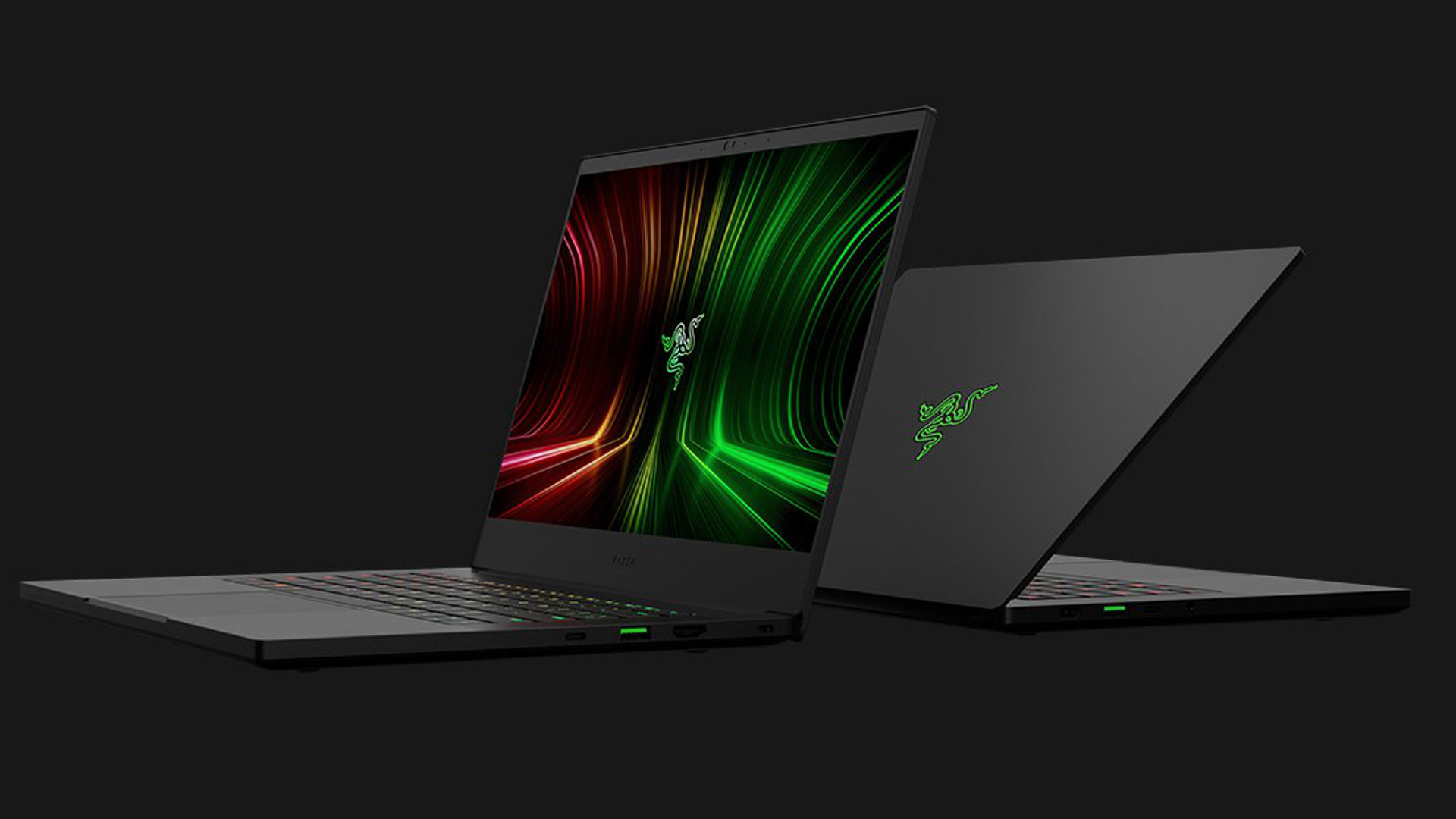The Razer Blade 14 review is in! Razer has been at the forefront of the gaming laptop business for years thanks to its sleek, stylish devices, and the gaming-focused firm has now introduced a new size to its range – a 14-inch notebook.
The Razer Blade 14 is ideal for anyone who wants a compact, subtle and stylish gaming laptop – perfect if you don’t like conventional gaming design, or if you’re a frequent traveller. The combination of high-end GPUs with the AMD processor makes it suitable for anyone who needs a laptop for work and gaming in equal measure.
The Blade is expensive, though, and you’ll get more power from these components if you’re happy to settle for a larger, heavier machine. That route will usually save you money, too.
The Blade 14 is the first Razer laptop of that size, and the form factor is becoming more popular: lots of people find conventional 13.3-inch machines too small and traditional 15.6-inch laptops too bulky.
The latest Blade combines this new screen size with Razer’s inimitable sense of style, and on the inside, the firm has deployed some new hardware so gamers can power through the latest titles.
As usual, however, Razer’s machines don’t come cheap. The most affordable Blade 14 will cost you $1,799 in the US and £1,799 in the UK, and the price rises to $2,799 and £2,799 if you want to shell out for the beefiest specification. It's easily a contender for a spot on our list of the best laptops, as the superior choice for gaming right now.
Razer Blade 14 review: Design
- Sleek, good looking and sturdy design
- Solid connectivity, but some features are missing
- A crisp, comfortable and fast keyboard for work and play
The Razer Blade 14 uses a new size, but the look of this machine remains identical to the rest of the Razer laptop range – and that’s no bad thing.
The Blade 14 looks fantastic, with a body made from black CNC-milled aluminum. The Blade has smart lines, subtle design and none of the silly extravagance that’s often associated with gaming laptops. Look beyond the green Razer logo and you’d be hard-pressed to know that this is a gaming device – it would be equally at home in the workplace.
The great design is paired with superb build quality. It’s a rock-solid machine, easily able to withstand being slung into a bag and carted to games events. And, with a weight of 3.9 lbs and a body that’s 16.8mm thick, it’s not too bulky either.
The Blade has two full-size USB ports and two USB-C connectors. The USB-C connectors handle DisplayPort output and power delivery, so you can easily charge your phone from this machine. The machine also has an HDMI 2.1 port, which means it supports 8K/120Hz outputs – so you’re well-covered for future-proofed playability.
That’s a reasonable degree of exterior connectivity, and on the inside, the Blade has dual-band Wi-Fi 6 and Bluetooth, which is welcome too. There’s also a Windows Hello webcam, so you can log in using facial recognition.
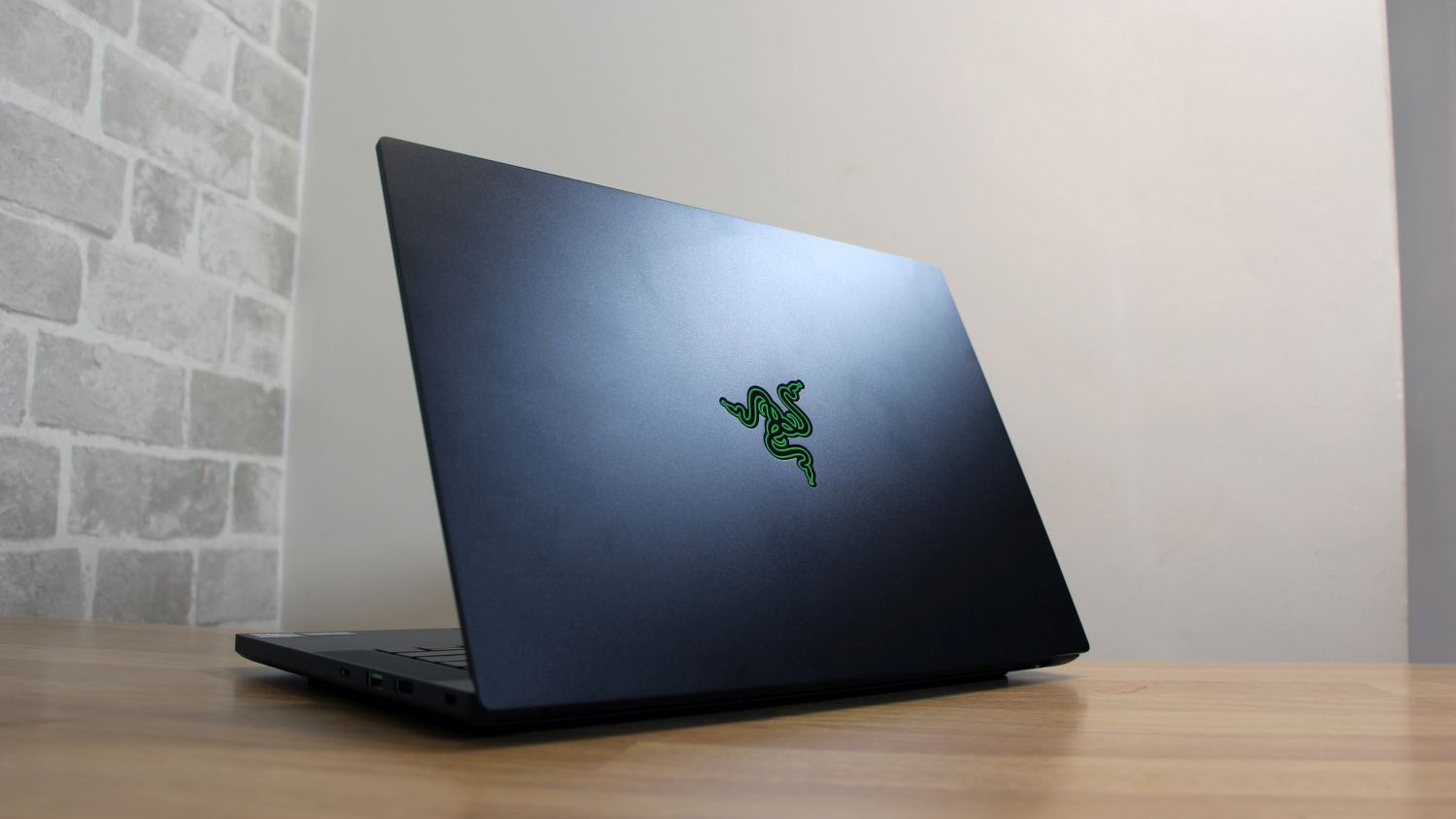
Some key features are missing, though: the slim Blade has no room for Ethernet, and you don’t get card or fingerprint readers. There’s no Thunderbolt support either.
The Razer’s keyboard has crisp, fast and consistent buttons – they’re easily good enough for fast gaming and typing. It also has customizable RGB LED backlighting.
The Blade’s compact size means there’s no number pad. The buttons are also quite shallow – larger laptops have taller keys with more vertical movement, and people who like weightier peripherals might find more satisfaction from those.
The trackpad is large and responsive and is fine for casual gaming - but, as with any gaming notebook, you’ll have a far better time if you attach a USB mouse.
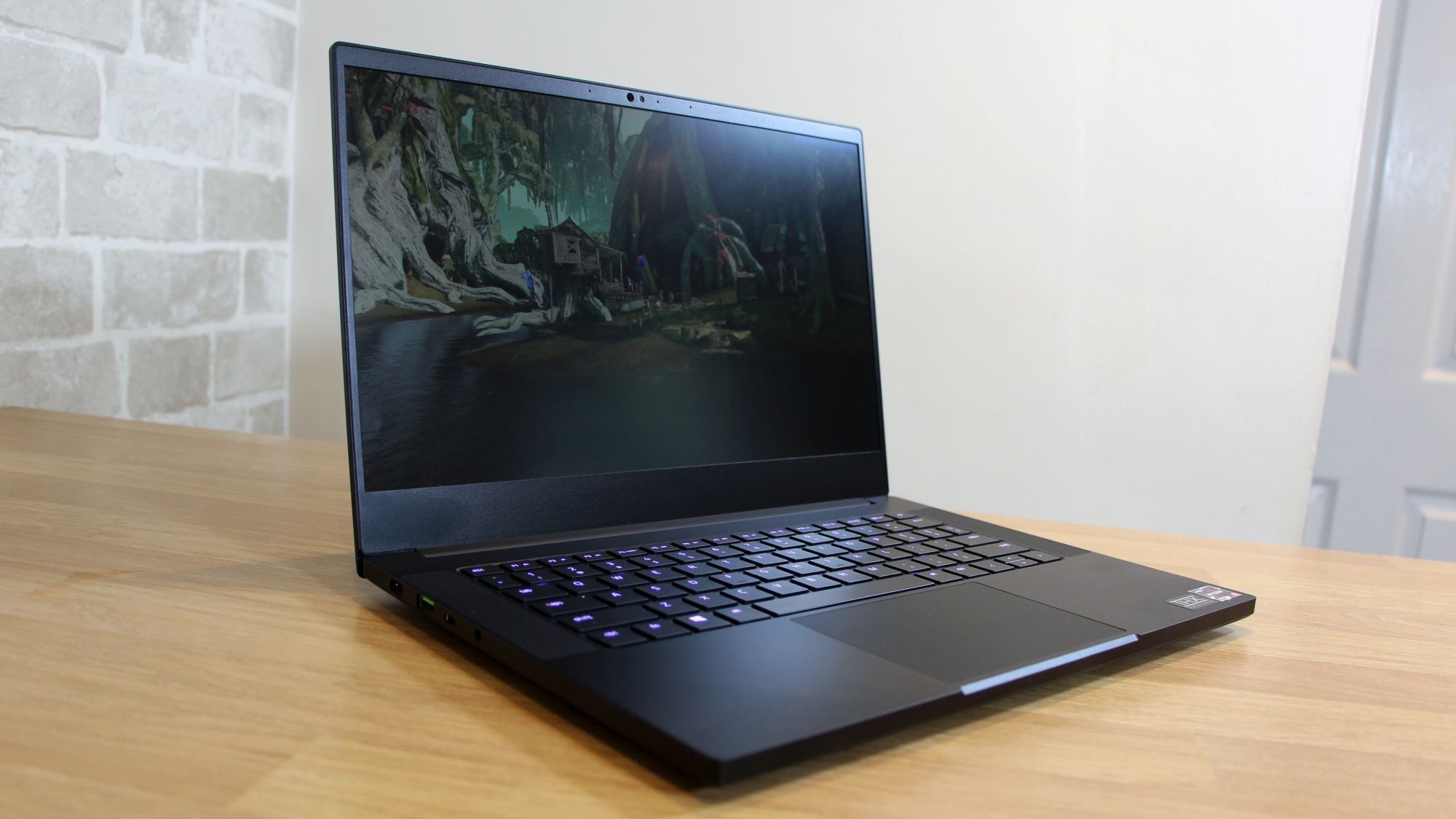
Razer Blade 14 review: Specs
- Three powerful graphics options
- A top-notch AMD processor
- Some unsurprising fan noise, heat and speed compromises
The most affordable Razer Blade 14 costs $1,799/£1,799 and relies on an Nvidia GeForce RTX 3060 graphics core. That chip has 6GB of memory and runs with a peak power consumption level of 100W, which is towards the top of Nvidia’s stated range for this particular core.
It’s a rock-solid option for mainstream games. It plays the most demanding single-player titles at 60fps and without any serious quality compromises, and it’ll play any of the big esports games at the speeds required to max out the 144Hz display. It’s a great all-rounder for 1080p gameplay, and its performance is comparable with most other RTX 3060 laptops.
The mid-range Blade costs £2,199/$2,199 and uses the RTX 3070, which has 8GB of memory. It’s a step up from the RTX 3060, and it pairs well with the upgraded display, which runs at 2,560 x 1,440 and 165Hz. It’ll play single-player and esports games at speeds ideal for the higher resolution and refresh rate, just like the RTX 3060 in the cheaper machine.
The priciest Blade combines the 1440p panel with an RTX 3080, which has a mighty 6,144 processing cores and 8GB of memory. It’ll play games faster, of course, and it will play absolutely anything on the 1440p display – but it also gives you more future headroom.
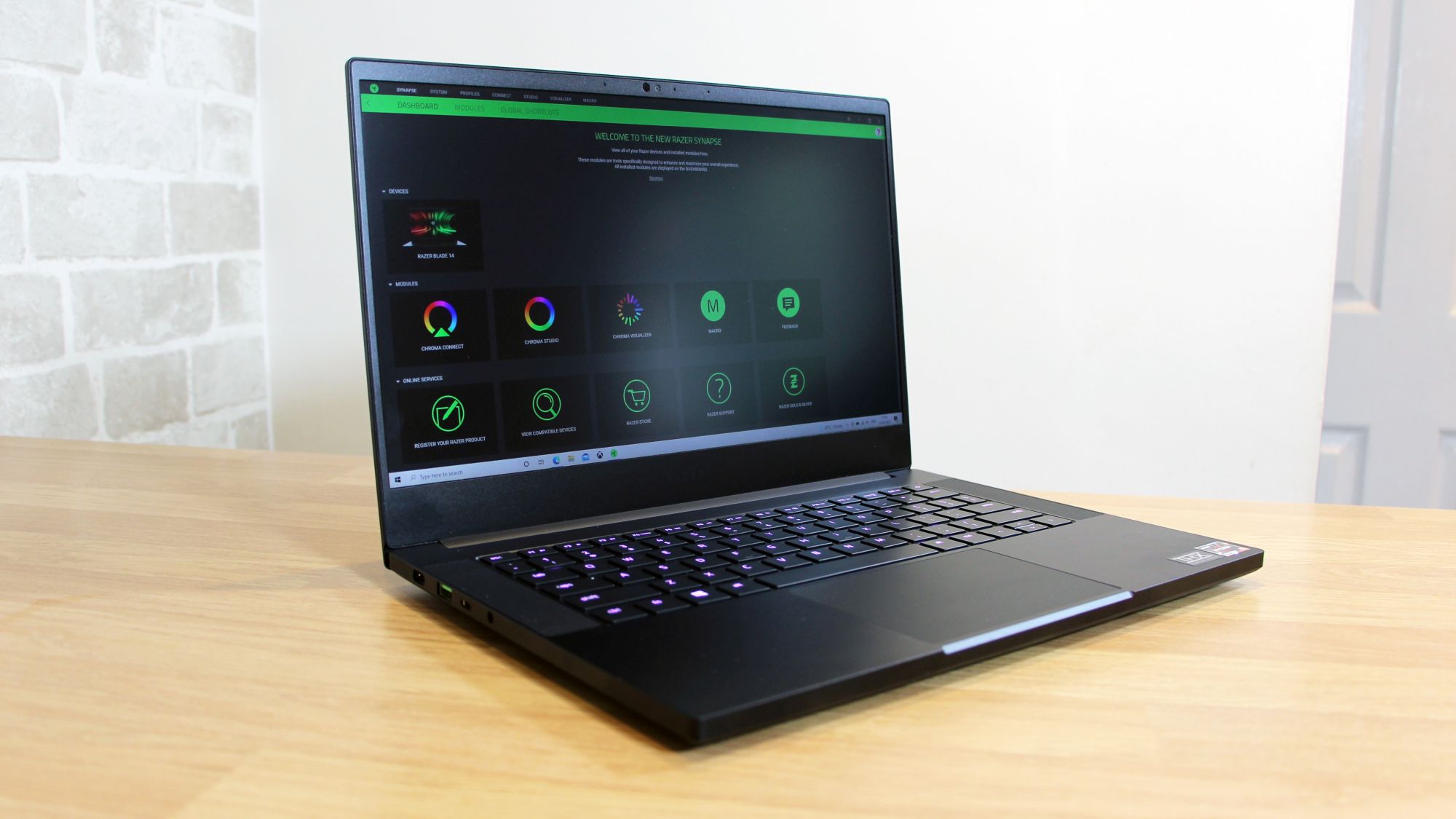
The RTX 3070 and RTX 3080 also run at peak power levels of 100W. That helps keep the heat and noise down in the slim Blade, but both of those GPUs can hit higher power levels than the RTX 3060. As you progress up Razer’s range, you effectively get weaker versions of each core. You’ll be able to get faster RTX 3070 and RTX 3080 laptops elsewhere, although those machines will be bigger than the Blade.
All three Blade 14 configurations use the AMD Ryzen 9 5900HX laptop processor. It’s one of AMD’s best laptop chips, and this is the first time Razer has used an AMD CPU. It’s a brilliant processor, with eight cores alongside theoretical base and boost speeds of 3.3GHz and 4.6GHz.
The rest of the specification is suitably high-end, too. All three models have 16GB of dual-channel memory and a 1TB SSD. That’s ideal for gaming and content creation.
The eight-core processor is great for games and content creation alike, which means the Blade can handle photo and video-editing workloads. Multi-tasking is simply not a problem, and you’ll be able to run as many browser tabs as you please.
That’s all great, but bear in mind that the chip never reaches its full speed due to the Blade’s slim, light design. That’s not unusual and not unique to the Razer – it’s common to find clock speed compromises in smaller machines. The CPU is never far behind its theoretical speeds, but if you want this chip to run at peak performance, you’ll need it inside a larger laptop. Also, bear in mind that the reduced clock speeds mean Intel’s new Core i7-11800H is faster in some content creation scenarios.
If you want to play mainstream games, the Razer’s entry-level specification is great – the RTX 3060 is a superb 1080p gaming core. The inclusion of the high-end AMD CPU also means that the entry-level option is ideal for content-creation work, too.
The RTX 3070 model is suitable for use alongside the crisper display with its higher refresh rate. The RTX 3080 version is fast, but it suffers the most from the machine’s power limits, it doesn’t have a 4K display, and it’s expensive – it’s really a 'money-is-no-object kind of choice, but it’s doesn't particularly represent good value.
These compromises are not ruinous, and they make sense given the Blade’s thermal performance. It produces moderate fan noise when gaming and it’s quieter when working, so it’s decent but it’s only silent if you run very modest software, like web browsers or Office apps. The underside becomes warm if you push the internals, and the metal above the keyboard sometimes becomes too hot to touch. Internal tests reveal that the CPU nudges against its peak temperature threshold if it’s pushed in tough work applications, so as it stands it’s not possible to get more from the chip in this notebook. The Blade’s thermal and aural performance was consistent across the three graphics cards, however.
It’s certainly not the loudest or hottest laptop, and some fan noise and heat are common with all gaming notebooks. The Blade is not unusual or poor in this regard. Be aware, however, that the processor gets pushed to the limit in the Razer Blade 14, and that you’ll experience heat and noise from this notebook.
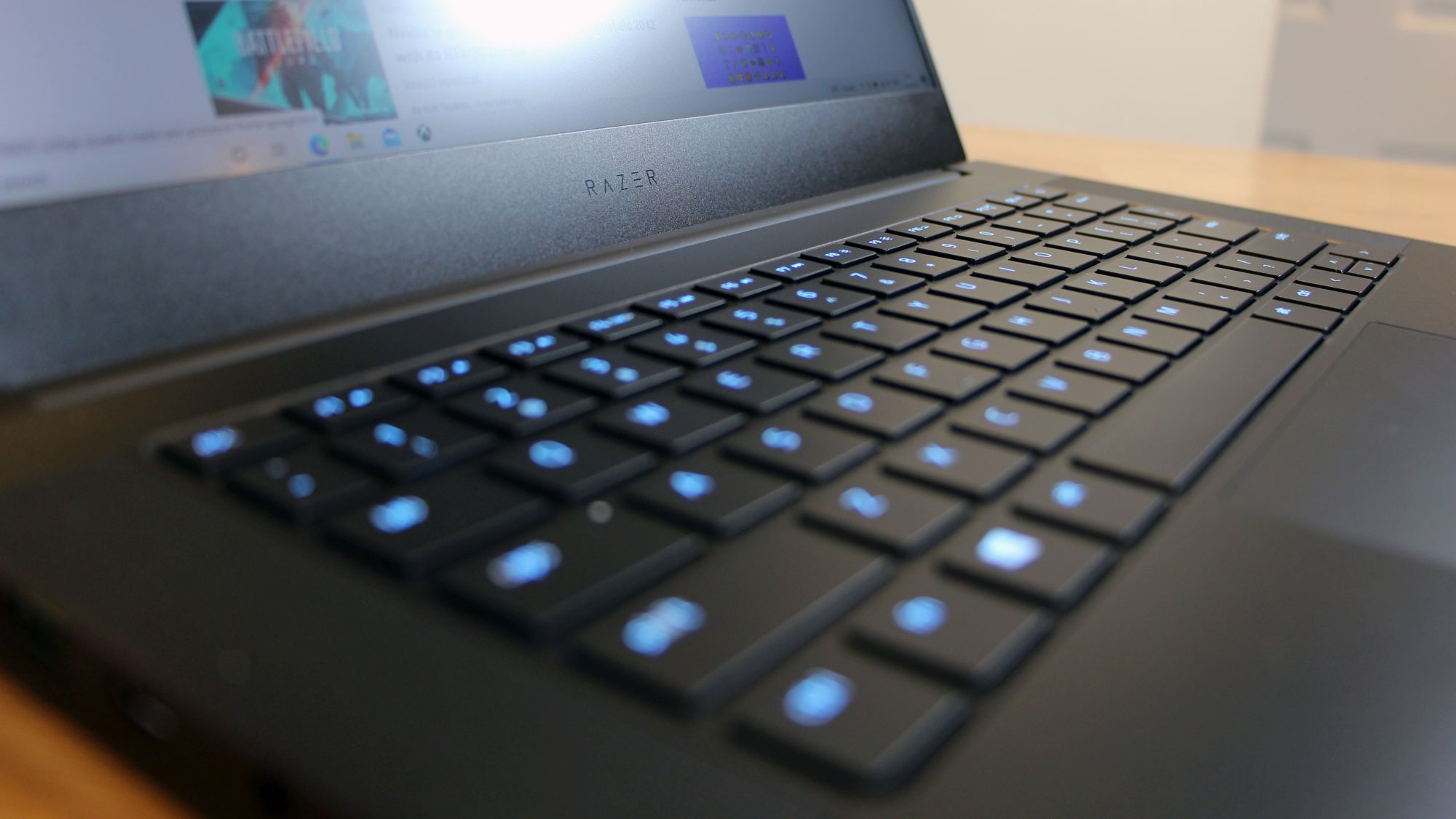
Razer Blade 14 review: Screen and speakers
- Two screen options, both with great quality
- The audio kit is bold, punchy and loud – good for games
The three Blade 14 variants are sold with two different displays. The RTX 3060 laptop has a 1,920 x 1,080 display that runs at 144Hz, while the RTX 3070 and RTX 3080 machines have 2,560 x 1,440 panels that run at 165Hz.
They differ in terms of their characteristics. The 1080p panel has a contrast level that approaches a monster 2,000:1, which is huge for an IPS display and means games have loads of punch and depth. The colors are very accurate.
The 1440p panel has great colors, too, and it renders more shades than the 1080p screen – so you get more high-end punch. It’s also got a higher resolution and refresh rate, which means it’s crisper and smoother, but its contrast is good rather than outstanding, so it loses out on depth.
Nevertheless, both displays are excellent for gaming and among the best you’ll find on any gaming laptop.
The speakers are good, too. There’s loads of volume considering the tiny dimensions of the Blade 14, and they produce punchy, detailed noise with some welcome bass and without a tinny high-end. A headset or speakers supply more depth and quality, but this audio gear is easily good enough for games and media.
Razer Blade 14 review: Battery life
- Solid battery life in work and media situations
- Mediocre battery life from gaming
The Blade 14’s three models all have reasonable battery life, but gaming laptops always make compromises in this area and the Razer offers no surprises.
If you want to play games with any Blade 14, you’ll get about ninety minutes of life from the laptop. That’s a mediocre result that matches most other gaming laptops.
The Blade lasted for just over seven hours in a mainstream work benchmark – think Office apps and web browsers. Deduct a couple of hours from that result if you push the hardware in creative apps. Impressively, the Blade lasted for ten hours during media playback.
Those work and media scores are decent and help lift the Blade above most other gaming laptops. But don’t expect to use this machine for a proper gaming session unless you stay plugged in.
Razer Blade 14: User reviews
- Plenty of positive reviews
- Some people notice minor issues
Razer’s website doesn’t carry user reviews, but the Razer Blade 14 has plenty of customer feedback on Amazon.
The feedback is overwhelmingly positive. Most buyers describe the Razer Blade 14 as a fantastic device that effectively balances speed, portability and performance, and loads of people like the impressive screens, crisp keyboards and sleek style. Other people say that the Blade 14 impresses because it offers less compromise than other small gaming notebooks.
The customer reviews weren’t all nice. Some people highlighted the heat issues that we observed in our review – a common issue on smaller gaming notebooks. Other users noted that users can’t upgrade the memory, and some people weren’t happy with the heavy power adapter. Some users also found that the aluminum exterior quickly became smudged with fingerprints.
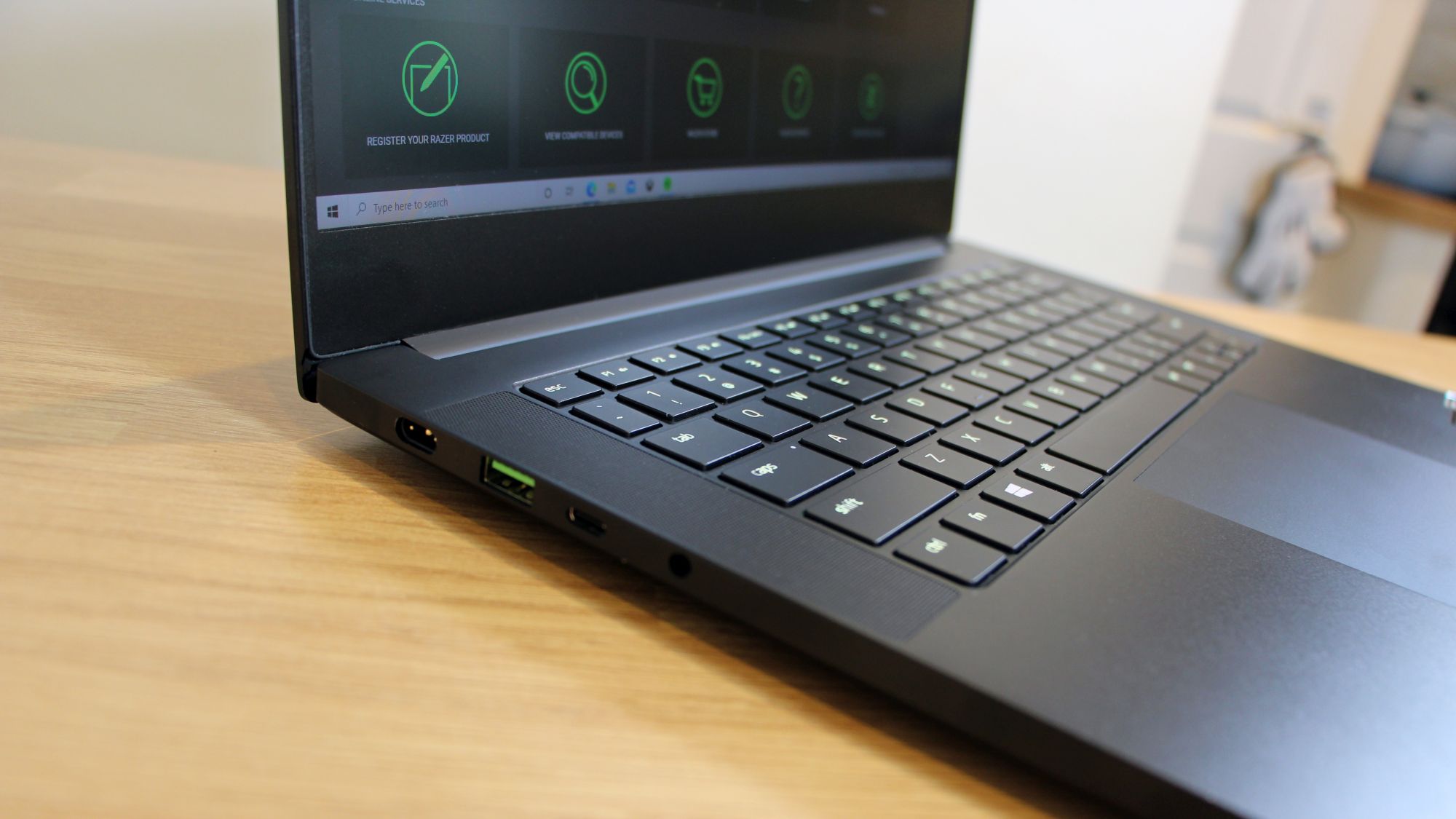
Should you buy the Razer Blade 14?
There’s an awful lot to like about the Razer Blade 14. The form factor and slim, sturdy design make the Blade an ideal traveling notebook, and it strikes a brilliant balance between tiny 13-inch machines and hefty 15.6-inch units. The Blade looks fantastic, has good mainstream connectivity, and has a crisp, tactile and effective keyboard.
On the inside, Razer’s graphics cards provide ample gaming power for mainstream and high-end performance, and the AMD processor is easily fast enough to tackle tough content-creation workloads. The two-screen options are different, but both are excellent for high-quality gaming.
As with any gaming laptop, there are a few issues. The graphics card and processors don’t run at their maximum speeds, and gaming battery life is mediocre. There’s heat and noise, and the Blade 14 is expensive. If you’re willing to give up the smaller form factor and sleek design, you can find more power and a punchier keyboard inside larger, heavier and cheaper notebooks.
If power and performance matter far more to you than portability and burnishing your gamer credentials, then check out our best home computers guide.
But if you want a small, fast and high-quality gaming laptop then the Razer Blade 14 is a great choice.
